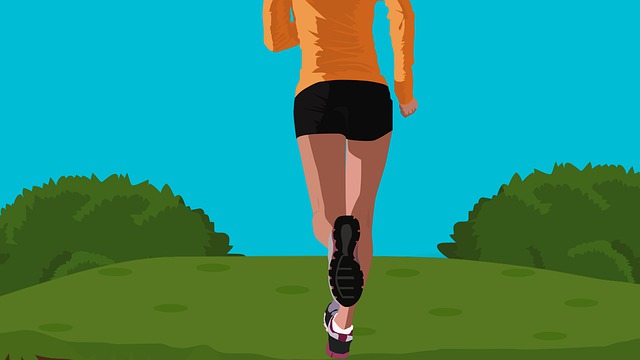“Activate and engage your glutes” is common advice for runners. Understanding how to do this, however, takes some practice. Learn how to activate these muscles along with common mistakes to avoid.
As the largest muscle in the body, the gluteus maximus often gets the most attention. But all three of the glute muscles contribute to athletic power and strength in their own way, including the smaller gluteus medius and gluteus minimus.
Whether a runner is looking to improve performance or heal from injury, glute training is a key part of the process. But the vague directive to “activate your glutes” is often confusing or misleading. Does this mean get stronger? Squeeze your glutes? Change your gait? Learning the right way to apply this advice is essential to making glute training for runners beneficial.
Dr. Lisa Mitro on Glute Training for Runners
This week’s guest on the podcast can help you better understand all the varied components of activating our glutes. Lisa Mitro is a Doctor of Physical Therapy who focuses on helping runners prevent and treat repetitive stress injuries. Her practical, action-focused advice has earned her over 110,000 followers on Instagram.
While the glute muscles are incredibly important for runners, they can also be a source of frustration and confusion. Whether it’s learning the difference between glute strengthening and activation, or discovering how we mistakenly compensate with other parts of the body, Lisa makes glute training easier to understand.
Lisa and I address all things related to your glutes, including practical steps to improve your running and injury resilience. We discuss:
- Glute basics, including the 3 different muscles and how each are used for running
- The often misunderstood difference between glute strength vs activation
- Common mistakes runners make with glute activation
- How to “build the house” when it comes to glute strengthening, from a foundation of stability to the roof of power
- The best way runners can prioritize glute strength (hint: don’t skip the warmup!)
- Lifestyle changes and awareness to improve your glutes
Lisa’s advice can benefit runners of any level – you won’t want to miss this episode!
Subscribe to the podcast in Apple Podcasts, Spotify, Stitcher, iHeartRadio, or Google Play
Links & Resources from the Show:
Thank you DrinkLMNT!
A big thanks to DrinkLMNT for their support of this episode! They make electrolyte drinks for athletes and low-carb folks with no sugar, artificial ingredients, or colors. They are offering a free gift with your purchase at DrinkLMNT. And this does NOT have to be your first purchase. You’ll get a sample pack with every flavor so you can try them all before deciding what you like best.
DrinkLMNT’s products have some of the highest sodium concentrations that you can find. Anybody who runs a lot knows that sodium, as well as other electrolytes like magnesium and potassium, are essential to our performance and how we feel throughout the day.
The watermelon flavor has become my favorite. I’m drinking one a day now to help me get enough fluids in our dry Colorado air. It’s tasty and delicious and I find that I’m not peeing every 45 minutes throughout the day, which might be an indication I wasn’t eating enough sodium.
There’s now mounting evidence that higher sodium intake levels are not unhealthy – and athletes need substantially more than your typical sedentary person. Of course, ask your doctor if you’re worried. But for those athletes running outside in the heat, an electrolyte replacement makes a lot of sense. So check out DrinkLMNT to try their new flavor or get a free sampler pack.
Thank you MOBO Board!
Invented by renowned physical therapist Jay Dicharry, MOBO helps you stabilize your stance with an innovative rocker board that’s set up on two fins. The design effectively forces you to drive your big toe into the bboard to improve your stability. I was pretty arrogant going into my first session on the MOBO Board. How hard can it be to balance, right? Well, I was humbled pretty quickly!
Even if you’re a good runner, better balance, stability, and proprioception is going to help you have a more powerful stride and prevent more running injuries. You’ll learn how to improve the efficiency of the kinetic chain from your hip to your big toe. Because as Jay likes to say, it’s not just how strong you are, but how well you use that strength.
I was just at a weekend physical therapy workshop (lol I was the only running coach) and learned how important (and rare) this simple movement is. Save 10% with code STRENGTHRUN10 at checkout at moboboard.com.
